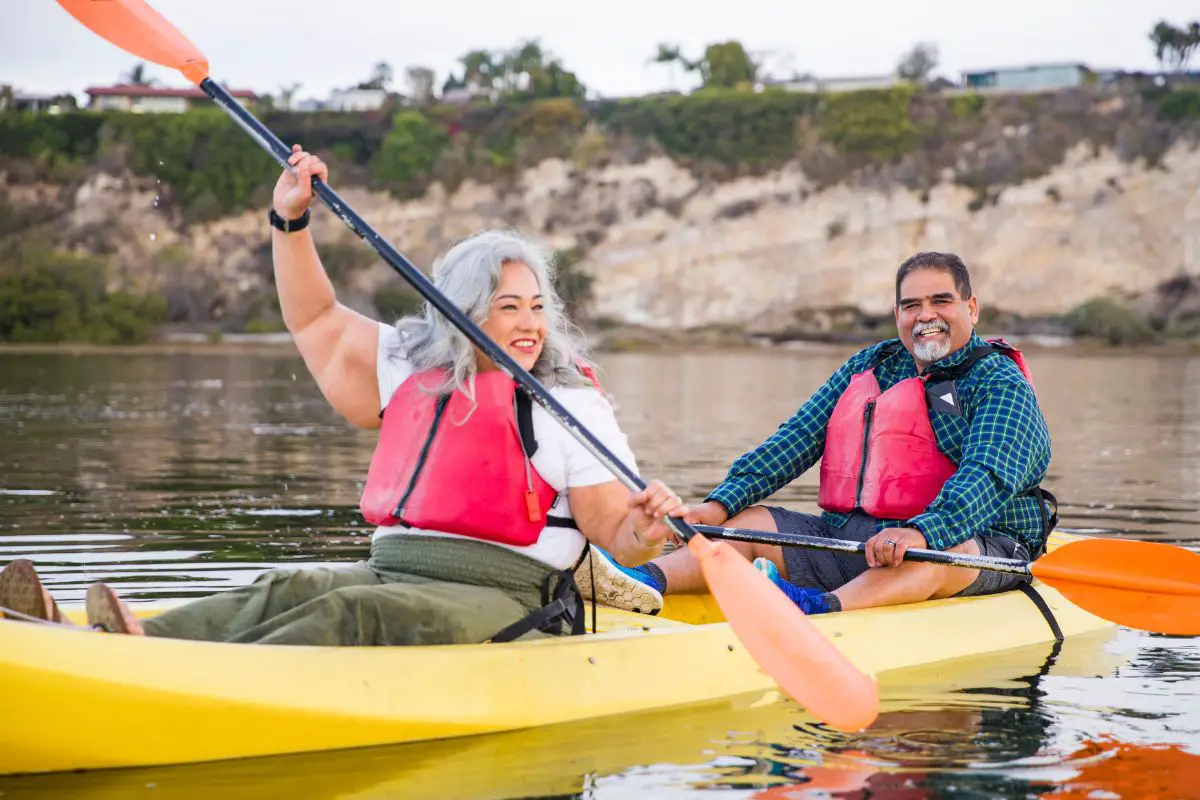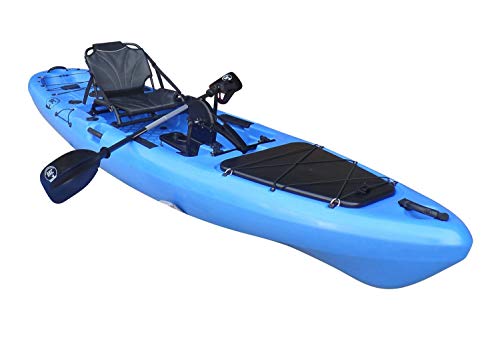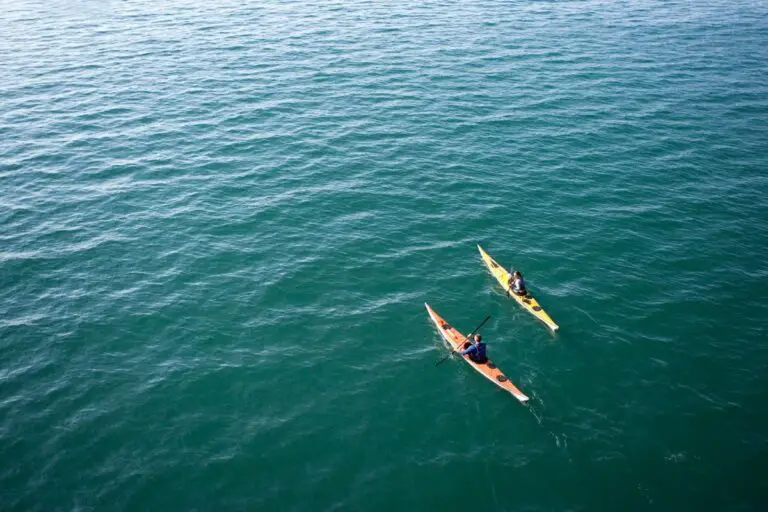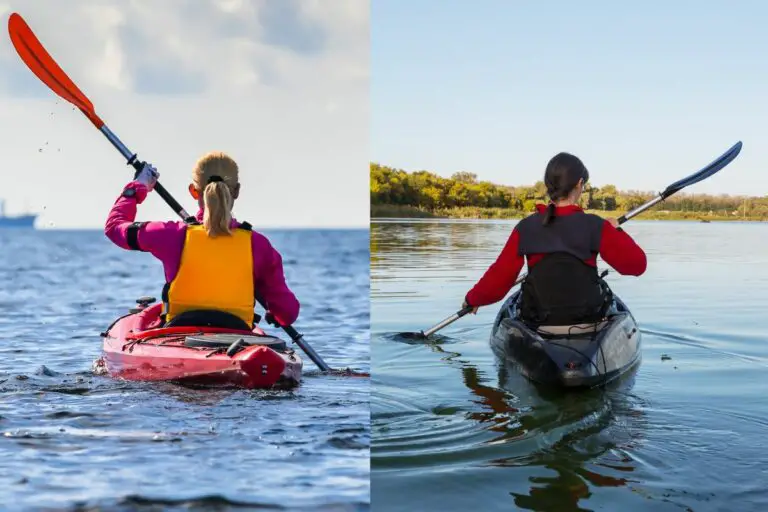Can You Kayak When Overweight? 5 Challenges & How to Overcome Them
Kayaking is a popular recreational activity that provides a thrilling adventure while exploring nature’s waterways. However, like any physical activity, kayaking requires a certain level of physical fitness and has specific weight limits.
So, can you kayak when overweight? This question has sparked debate among kayaking enthusiasts, with some arguing that kayaking is accessible to everyone while others believe that weight limits exist for safety reasons.
You can kayak when overweight; however, it may be more challenging and physically demanding. To avoid any issues, you need to choose a kayak with high weight capacity and comfortable seating that accommodates your size. You also need to learn proper paddling techniques and take safety measures.
Keep reading to learn more about the weight limit for kayaking and how to kayak safely if you’re overweight.
Table of Contents
Can You Kayak When Overweight?
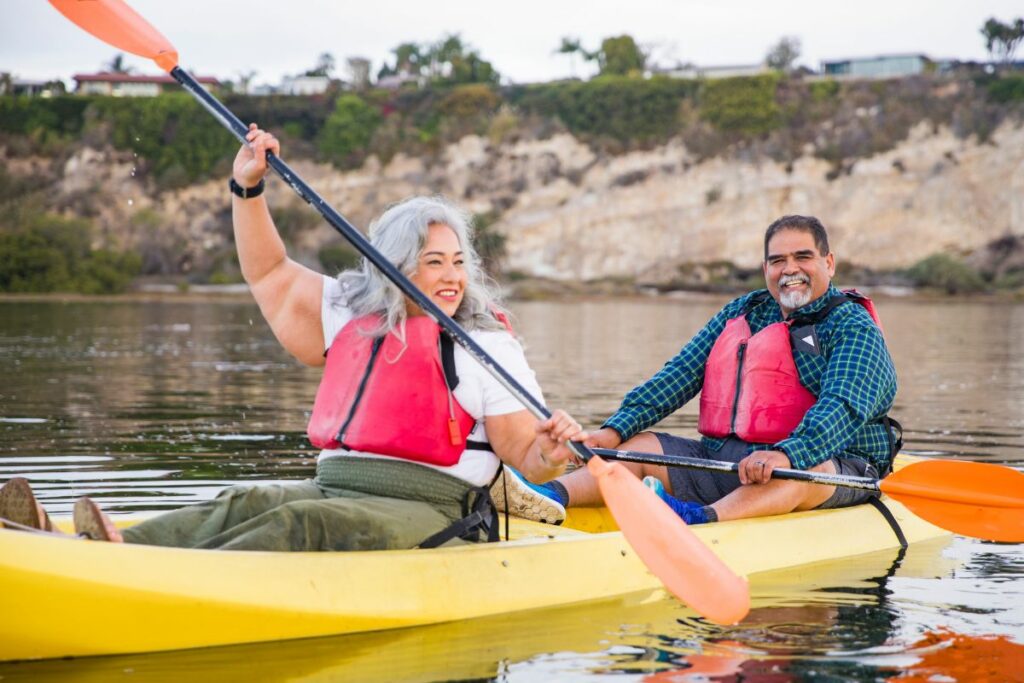
Kayaking is generally an accessible activity for people of all sizes, including those who are overweight. However, there are a few challenges that an overweight person might face when kayaking.
- Physical demands: Kayaking can be physically demanding, and an overweight person may face additional challenges due to their size.
- The extra weight can make paddling more difficult and require more effort, leading to fatigue and potential injury.
- Instability: An overweight person may find it more difficult to balance in the kayak, especially if it has a lower weight limit.
- This can increase the risk of tipping over and falling into the water.
- Reduced mobility: An overweight person may find it more difficult to move around in the kayak, which can make it harder to steer and control the kayak.
- This can be especially challenging in faster-moving water or when navigating tight turns.
- Difficulty swimming: An overweight person may have difficulty swimming if they fall out of the kayak.
- This can be dangerous, especially if they are not wearing a life jacket or if they are kayaking in deep water.
- Finding suitably sized gear: An overweight person may struggle to find a kayak with a high weight limit or a properly fitted life jacket.
- Additionally, tight-fitting gear can be uncomfortable and restrict movement, making kayaking even more challenging.
If you’re overweight and plan on kayaking, you need to keep these challenges in mind and prepare accordingly to ensure you have a safe, comfortable, and overall enjoyable experience out on the water.
What Is the Weight Limit for Kayaking?
Kayaking does not have a specific weight limit, as it can vary depending on the kayak model and its design.
Generally, most kayaks have weight limits that range between 250 and 600 pounds. However, it’s important to note that these weight limits may also include the weight of any gear or equipment that is being carried in the kayak.
What Happens If You Exceed the Kayak’s Weight Limit?
Exceeding the weight limit of a kayak can increase the risk of instability, reduced mobility, and other safety hazards.
It can also cause the kayak to ride lower in the water, which can make it harder to steer and control. The extra weight can also increase drag and require more effort to paddle, leading to fatigue and potential injury.
Additionally, if the weight limit is significantly exceeded, it can cause the kayak to capsize or sink, which can be dangerous or even life-threatening.
It’s essential to choose a kayak with a decent weight limit and to follow the manufacturer’s recommendations to ensure that it is safe and appropriate for your weight and any gear you plan to carry.
Is Canoeing Better Than Kayaking for Overweight Individuals?
Both canoeing and kayaking can be enjoyable and beneficial activities for overweight individuals. However, there are a few differences to consider when deciding between the two.
Canoeing generally offers more stability and space, making it easier for an overweight person to move around and balance. Canoes also tend to have higher weight limits than kayaks, which can provide more comfort and safety for overweight individuals.
On the other hand, kayaking can offer more control and agility, which can be beneficial for navigating through rougher waters or maneuvering around obstacles. Kayaks are also typically faster and more efficient, which can provide a more challenging and rewarding workout.
Ultimately, the best choice between canoeing and kayaking for overweight individuals depends on personal preference and specific activity goals.
Can Kayaking Help with Weight Loss?
Kayaking can be an effective form of exercise and can contribute to weight loss as it can help burn calories and build strength in various muscles throughout the body, including the arms, back, and core.
Typically, kayaking can burn anywhere from 400 to 500 calories per hour for an individual weighing around 150 pounds. The exact amount of calories burned will depend on factors such as the activity’s intensity, the trip’s duration, and the individual’s weight and metabolism.
Kayaking can also provide mental and emotional benefits, such as stress relief and improved mood, which can contribute to overall wellness and a healthy lifestyle.
However, it’s important to note that weight loss and fitness goals are best achieved through a combination of healthy eating habits, regular exercise, and a balanced lifestyle.
How to Kayak If You’re Overweight?
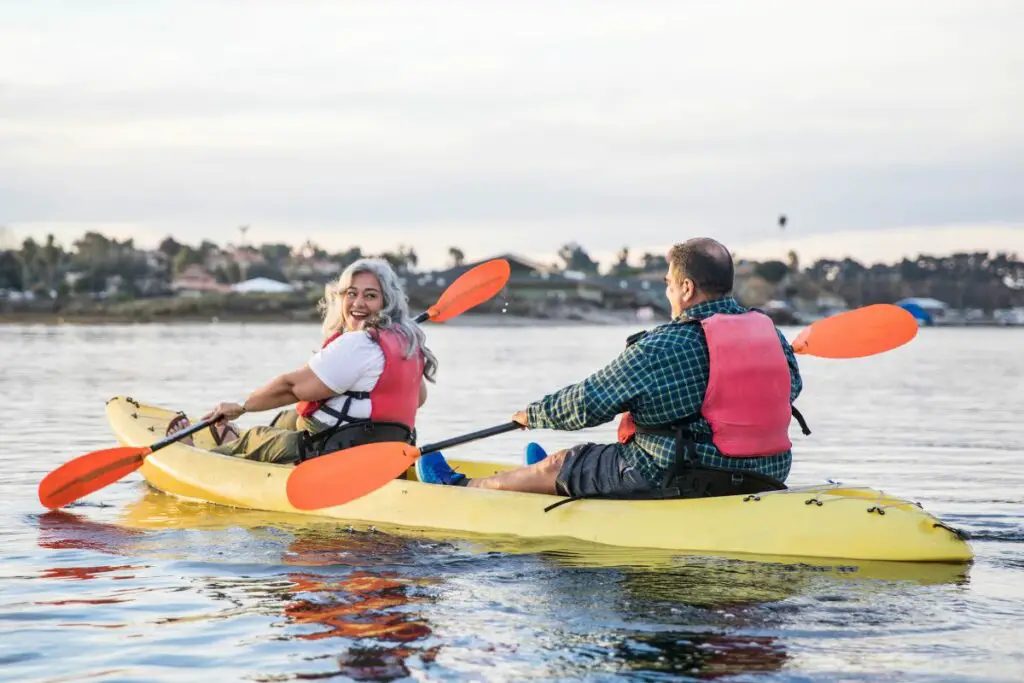
If you’re overweight and interested in kayaking, there are several steps you can take to ensure a safe and comfortable experience:
- Choose the right kayak: Look for a kayak with high weight capacity and comfortable seating that can accommodate your size and weight comfortably.
- It’s also important to choose a kayak with a wider, more stable base to help with balance and stability.
- Wear proper gear: Make sure to wear a properly fitted personal flotation device (PFD) or life jacket at all times while kayaking.
- Also, choose clothing that is lightweight, breathable, and allows for a full range of motion. Avoid tight or restrictive clothing that can limit movement and cause discomfort.
- Learn proper paddling techniques: Take the time to learn and practice proper paddling techniques to avoid overexertion and reduce the risk of injury.
- Maintain proper posture: Good posture is important for avoiding strain on your back while kayaking. Keep your back straight, and your shoulders relaxed, and avoid slouching or hunching over.
- Start with calm waters: Start with calm, flat waters to practice basic skills and get comfortable in the kayak before moving on to more challenging conditions.
- Listen to your body: Pay attention to how your body feels during and after kayaking. If you experience pain or discomfort, adjust your technique and paddling intensity as needed to avoid overexertion and take a break as needed.
- Consider taking lessons: Consider taking a kayak lesson from a certified instructor to learn proper technique and safety tips.
- Kayak with a partner: Consider kayaking with a partner or group for added safety and support.
By taking these steps, you can safely and comfortably enjoy kayaking as an overweight individual. Remember to always prioritize safety and listen to your body to avoid injury or discomfort.
How to Easily Enter or Exist a Kayak If You’re Overweight?
Entering and exiting a kayak can be challenging for anyone but especially difficult for overweight individuals.
Here are some tips for making the process easier:
- Use a dock or shoreline: If possible, launch your kayak from a dock or shoreline to make it easier to get in and out of the kayak.
- Sit on the edge: When getting into the kayak, sit on the edge with your feet in the water and your hands on the side of the kayak. Slowly slide into the cockpit while keeping your weight centered over the kayak.
- Use a paddle or partner: Use a paddle or the assistance of a partner to stabilize the kayak while you get in and out.
- Take your time: Move slowly and deliberately, taking the time you need to get in and out of the kayak safely.
- Wear non-slip shoes: Wear non-slip shoes or water shoes to help prevent slipping and falling.
- Use a kayak seat cushion: Using a kayak seat cushion can provide additional comfort and support while entering and exiting the kayak.
By following these tips and using a stable kayak, you can safely and comfortably enter and exit your kayak, even if you’re overweight.
Where Should the Heavier Person Sit in the Kayak?
A heavier person should typically sit in the rear seat, also known as the “stern” seat when kayaking alone or with one other person. This is because the stern seat is closer to the kayak’s center of gravity, which helps improve stability and balance.
Having the heavier person sit in the stern seat can also help with steering and control, as the person in the rear can help to balance and adjust the kayak’s direction. Additionally, the front seat, or “bow” seat, tends to be more cramped and less stable, which may not be as comfortable or safe for a heavier individual.
However, it’s important to consider the specific kayak model and design, as well as the size and weight of the individuals involved, when determining seating arrangements. It’s also a good idea to check the manufacturer’s recommendations and consider the specific needs and abilities of each person.
Kayak Recommendations for Overweight People
There are many kayaks that can work great, but I personally favor this:
My top pick is this Brooklyn Kayak Company PK13 sit-on-top kayak. It’s an excellent choice for overweight individuals looking for a stable and comfortable kayak.
With a weight capacity of up to 550 pounds, it can easily accommodate larger paddlers. Additionally, the adjustable footrests and padded seat provide added comfort for extended paddling sessions.
If you are looking for an alternative, check this:
The BOTE Zeppelin Aero Inflatable Kayak is another ideal choice for overweight individuals, especially those on a tighter budget.
The inflatable design makes it easy to transport and store, and the durable material can handle weights up to 500 pounds. The wide design also provides added stability and reduces the risk of capsizing.
Kayak your way to Freedom
- On a budget? Check out the best fishing kayaks under $500 here and the best Fishing Kayaks under $1,000 here. Or Check the best Cheap Kayaks here.
- Going fishing? Here are the best Ocean fishing kayaks, and here are the best River Fishing Kayaks.
- You can also find the best Fly Fishing Kayaks here and the best Bass Fishing Boats here.
- A bit experienced? Check out the best modular kayaks here and the best tandem fishing kayaks here.
- Looking for something special? Check out my favorite Ducky kayaks here.
- Navigate your way with these awesome and beginner-friendly Kayak compasses.
- Going Hunting? These Duck hunting kayaks will give you an unfair advantage!
- Have a need for speed? These motorized kayaks will get you moving.
- Protect yourself from the sun with these Kayak shades, and make your kayak more comfortable with these Kayak seats.
- Keep your feet dry and warm with these superb Kayaking shoes.
- Going Kayaking in cold water? Stay warm with these Kayaking gloves.
- Paddle Less, Fish More with the Best Kayak Motors
- Looking to get a trolling motor on your kayak? Check out the best kayak trolling motor mounts here.
If you like this article, please share it or pin it, you can find the share buttons below. We will really appreciate it ❤️

